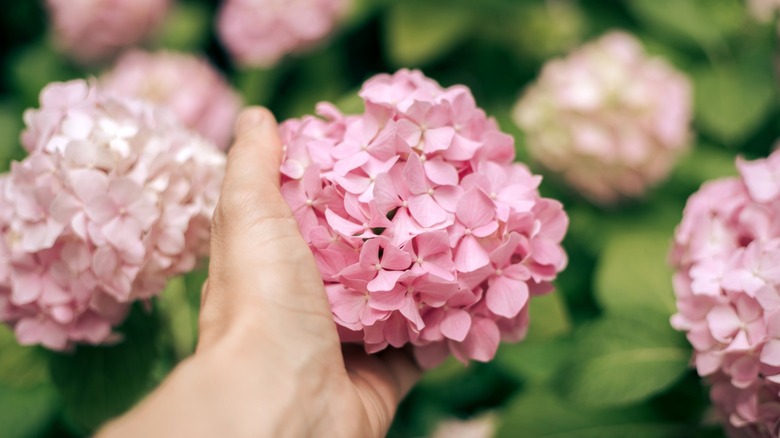Beautify The Lawn Surrounding Your Home & Boost Curb Appeal With Smooth Hydrangeas
Creating a cohesive lawn complete with beautiful, eye-catching landscaping can be a challenge. For example, finding the perfect shrub to grow close to your home is not the easiest task, especially if you want to avoid plants that grow too large or require a lot of maintenance. Smooth hydrangeas (Hydrangea arborescens), however, marry the best qualities you could want in an ornamental shrub. They provide a beautiful, native option that will not overtake your yard while maintaining attractive, long-blooming flowers. If you're seeking out the perfect hydrangea for a low-maintenance way to landscape a front yard for added curb appeal, this species is a winner.
Native to the Eastern and Southeastern portions of the U.S., smooth hydrangeas grow in moist, wooded areas in the wild. They prefer morning sun with afternoon shade, but can tolerate consistent sunlight when provided proper moisture. Hardy from zones 3 through 9, smooth hydrangeas are fairly cold hardy and easily tolerate being cut back to the ground in winter, as new growth is necessary for summer flowering.
Make sure to select a variety of smooth hydrangea best suited for your yard and landscaping needs. Some of the most popular cultivars of this particular hydrangea species have been altered to create bigger flowers and different hues. For example, 'Annabelle' features large white flower heads and grows just 3 to 4 feet high – ideal for growing close to windows or near the foundation of a home. Other options include more compact cultivars and ones with pink blooms.
Elevate landscaping with smooth hydrangeas
As opposed to other hydrangea species, like oakleaf or big leaf, the smooth hydrangea is ideal for spots closer to structures. The low-growing nature of these shrubs at their maturity means that they won't obscure windows or run roughshod over the front of your home. At their tallest, smooth hydrangeas are 3 to 6 feet tall and often wider than their height. Cultivated smooth hydrangeas exhibit more of a solid, steady appearance. Given the right combination of water and fertilizer, your smooth hydrangeas will form into compact clumps.
When using smooth hydrangeas to landscape around your home, make sure to carefully plan where you place them in your garden beds. You'll want to compile a list of plants you don't want to grow close to your hydrangeas. To maintain a beautiful, low-maintenance garden bed, avoid planting any water-loving plants close to your smooth hydrangeas. You could end up spending a lot of time attempting to keep both species watered.
Determining how much space your hydrangea plant needs in your yard is also vital. Smooth hydrangeas like to be spaced about 3 to 6 feet apart from other plants, including other hydrangeas. With proper care and consideration, the end result will be a complement to your entire yard and an elevation of your home's exterior.

